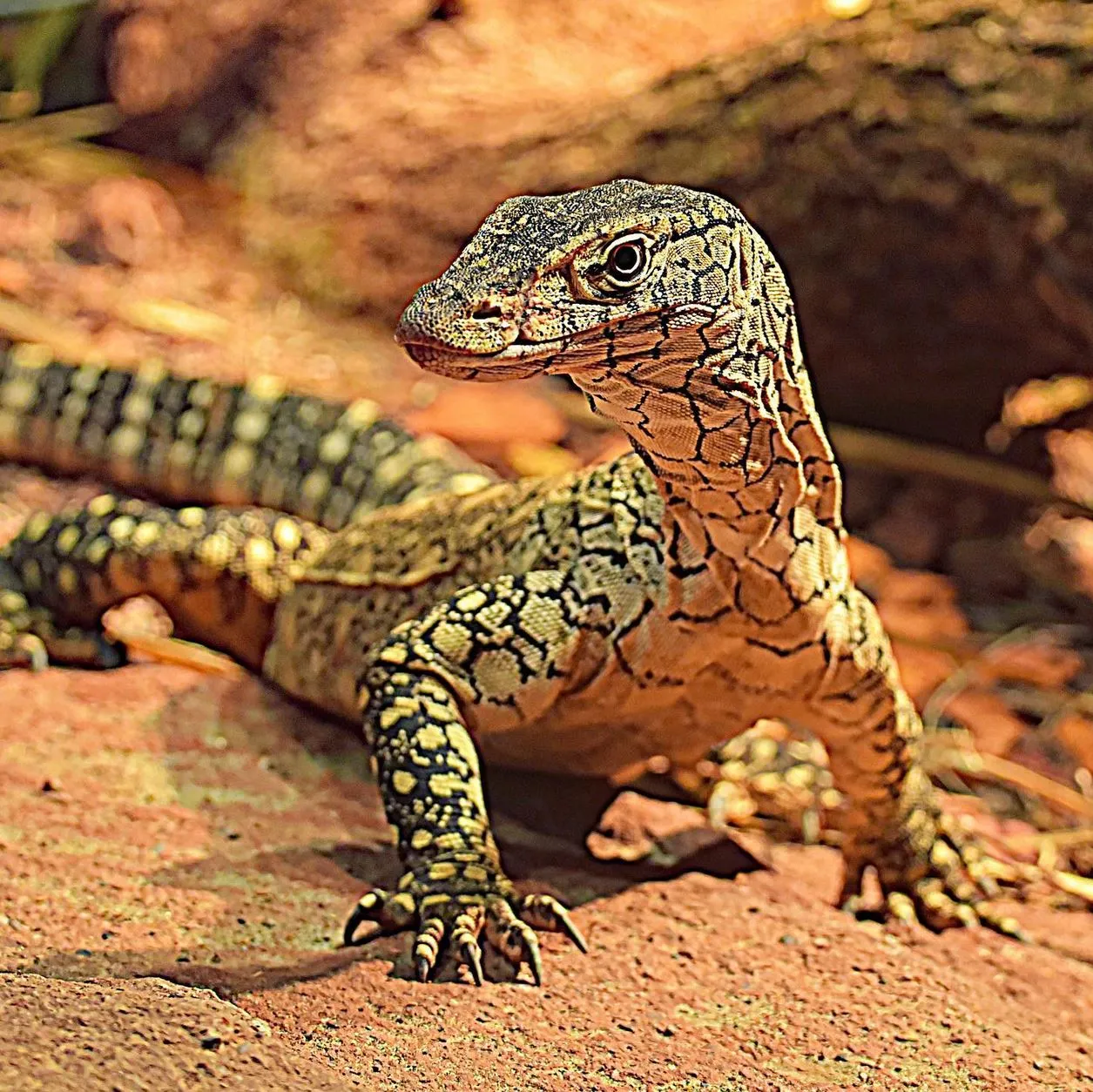When you think of the Australian Red Desert you think of vast landscapes and iconic animals like kangaroos and emus. But there’s another part of the desert’s ,that gets overlooked – its reptiles. From venomous snakes to agile lizards, the Australian Red Centre Desert is home to an amazing array of reptiles that have adapted to one of the toughest environments on earth. If you’re on Uluru tours, you’ll likely see many of these incredible creatures. In this article we’ll take a look at the world of Red Desert reptiles, including venomous snakes like the Tiger Snake and Mulga Snake, and the Frill-necked Lizard and Barking Gecko.
Red Desert: A Reptile’s Paradise
The Red Desert is part of Australia’s arid interior and is a tough place to live. Scorching days, freezing nights and no water. But many reptiles have evolved to survive and even thrive in this harsh landscape. The dry season and wet season bring different challenges but these reptiles are up for it.
Red Desert Reptiles
1. Perentie (Varanus giganteus)
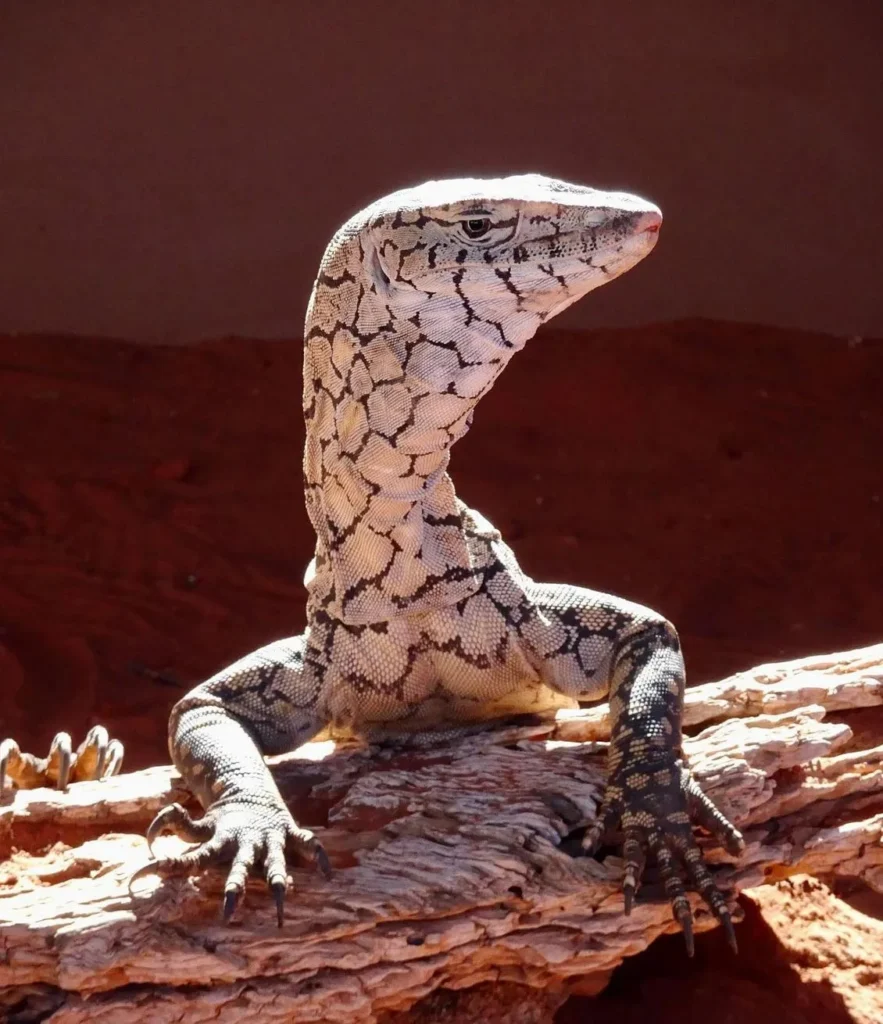
One of the world’s largest monitor lizards, the Perentie can grow to 2.5m long and is the top predator in the Red Desert. With sharp claws and a keen sense of smell it preys on smaller animals making it one of the most formidable creatures in the Australian desert.
2. Central Bearded Dragon (Pogona vitticeps)
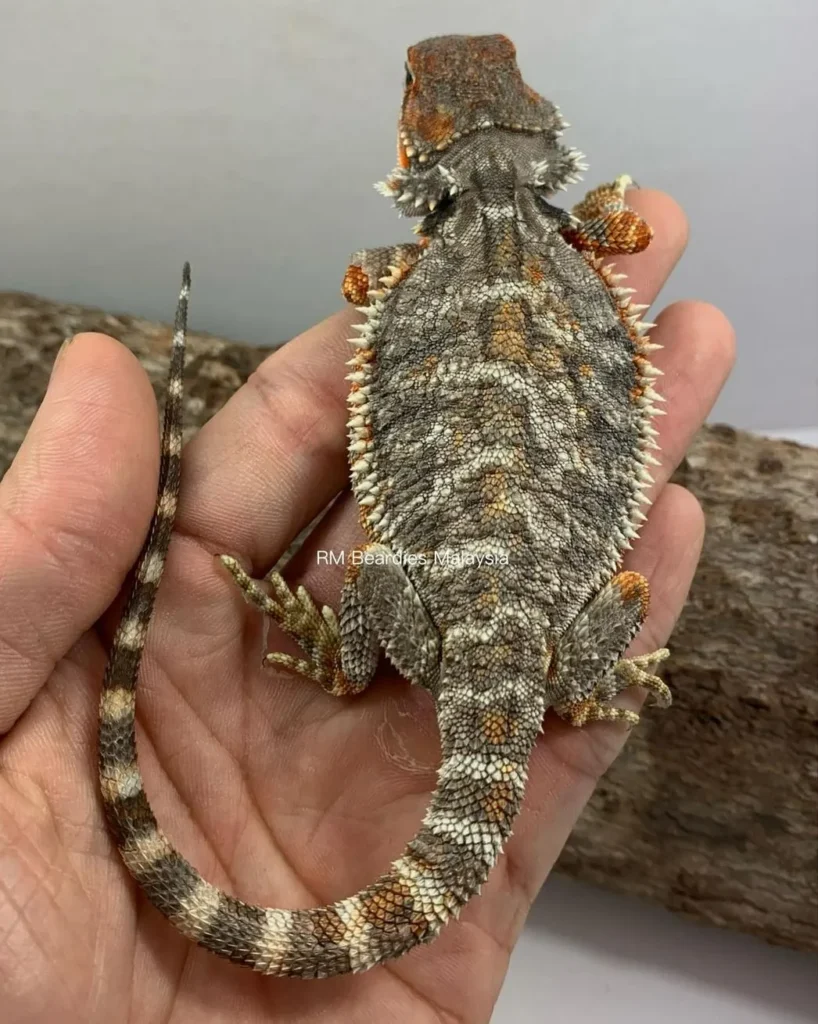
This common lizard is easy to identify by the spines on its head that it displays when threatened. Popular as a pet, the Central Bearded Dragon thrives in the wild Red Desert by hunting insects and basking in the sun. These lizards are common Australian reptiles and part of the region’s diversity.
3. Thorny Devil (Moloch horridus)
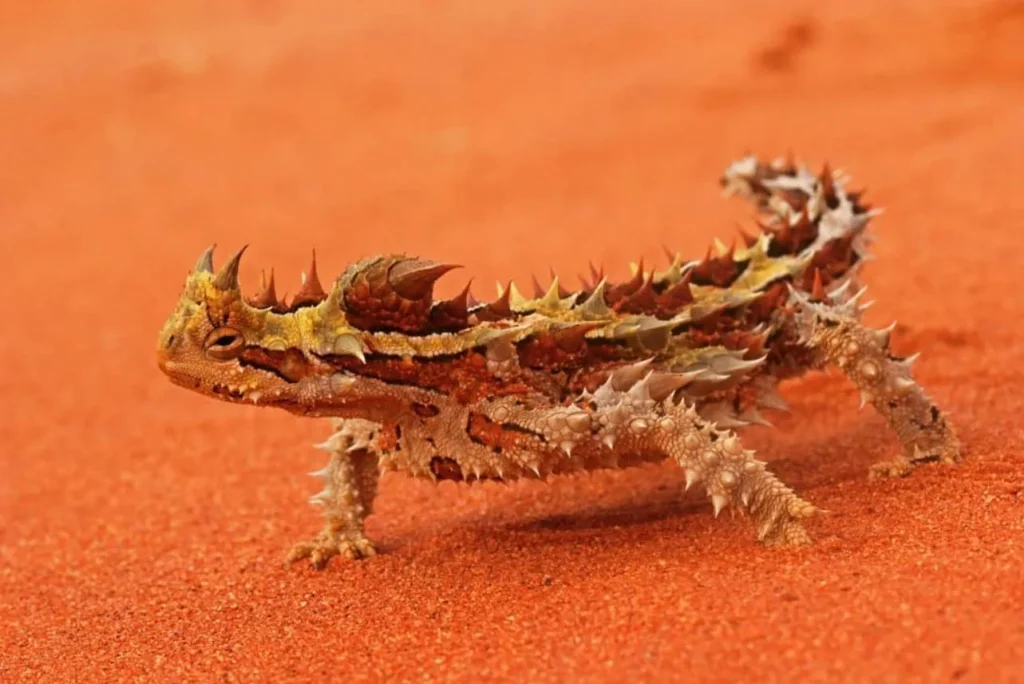
The Thorny Devil is one of the most bizarre reptiles in Australia. Spiky all over, it feeds on ants and has a special way of absorbing water through grooves in its skin. It’s an amazing creature that uses every drop of moisture in the desert.
4. Desert Death Adder (Acanthophis pyrrhus)
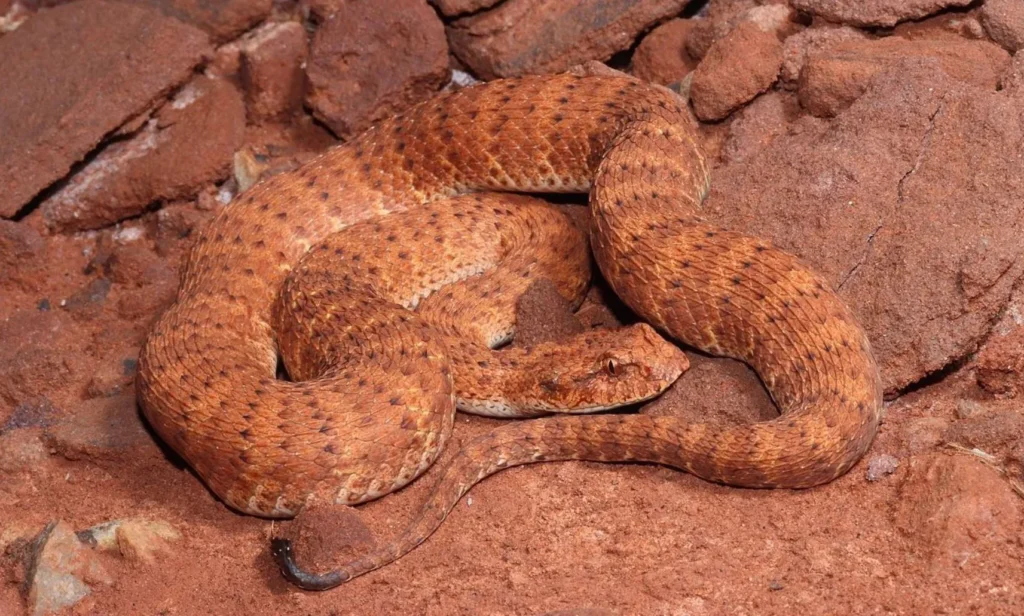
One of the most venomous snakes in the Red Desert, the Desert Death Adder, is an ambush predator. Camouflaged among the rocks and sand it waits for its prey to come within striking distance. Though deadly, it’s rarely seen by humans.
5. Woma Python (Aspidites ramsayi)
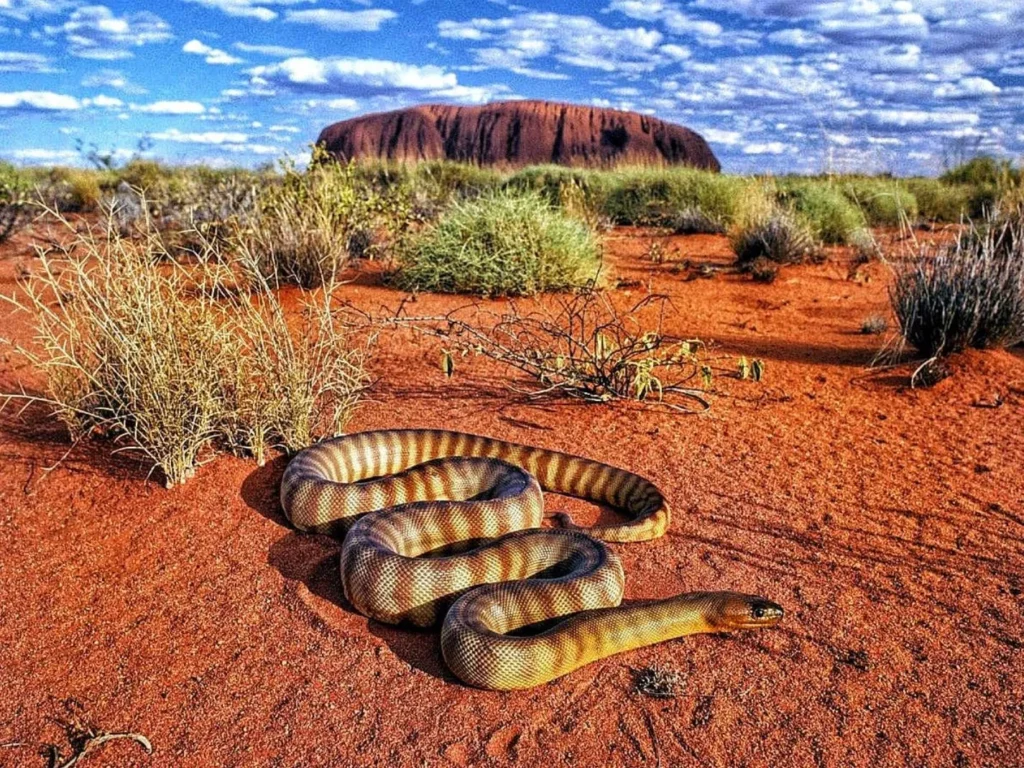
Non-venomous constrictor that preys on small mammals. Unlike many snakes the Woma can handle the extreme arid conditions so it’s often seen in the desert. Its beautiful pattern makes it one of the most beautiful snakes in the region.
6. Brown Snake (Pseudonaja textilis)
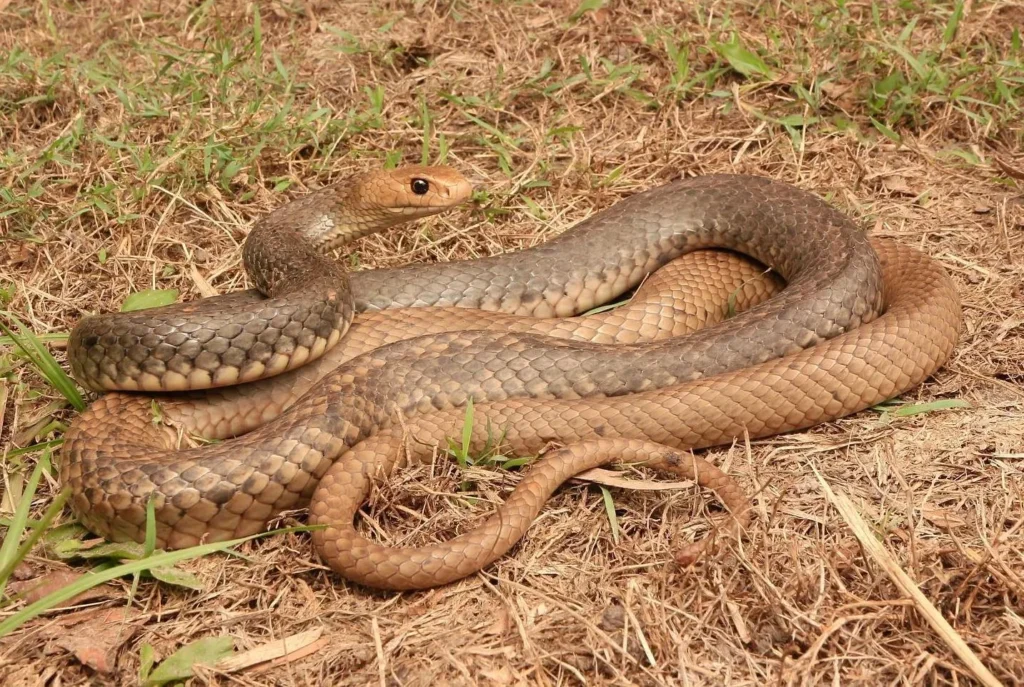
Another very venomous snake found in the Red Desert. Aggressive when threatened and one of the most deadly snakes in Australia. Keeps small animal populations in check.
7. Frill-necked Lizard (Chlamydosaurus kingii)
Master of defence, the Frilled-necked Lizard puffs out its frill when threatened, making it look bigger than it is. With its speed and frill it can escape the predators in the harsh desert conditions. A favourite among wildlife enthusiasts visiting the Ayers Rock Resort area.
8. Barking Gecko (Underwoodisaurus milii)
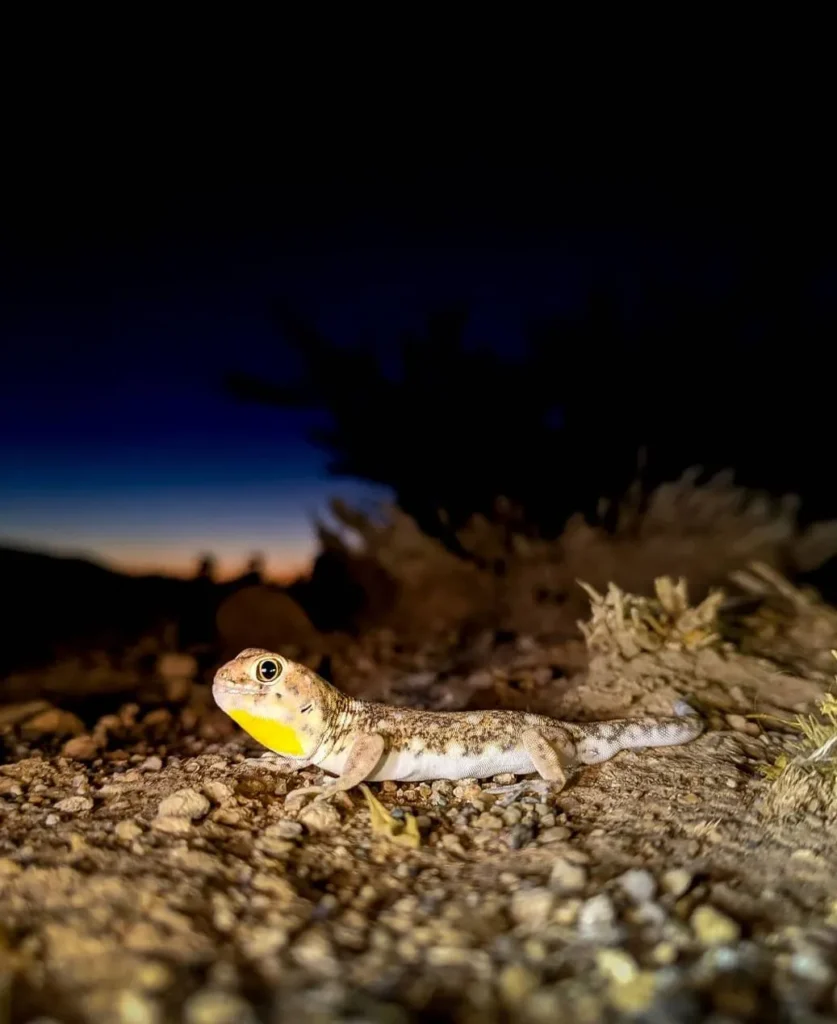
Named for the barking sounds it makes, the Barking Gecko is a nocturnal hunter, feeding on insects. This species likes rocky areas and shelters in crevices during the day. One of many geckos found in the Red Desert.
9. Marbled Gecko (Christinus marmoratus)
The Marbled Gecko is a small nocturnal lizard with a marbled pattern to blend in with its surroundings. Found among jagged cliffs and rocky outcrops, a perfect example of how reptiles use camouflage to hide from predators.
Red Desert Reptiles Adaptations
Reptiles in the Red Desert have developed some amazing adaptations. Some like the Thorny Devil have special ways of getting water, others like the Curl Snake and Mulga Snake can go without food and water for long periods. Frilled Lizards and monitor lizards burrow or shelter in rock crevices to escape the heat. They can regulate their body temperature and conserve water, perfect for desert life.
The reptiles of the Red Desert have developed many adaptations to cope with the harsh conditions. These include:
- Thermoregulation: Many reptiles, like lizards, bask in the sun to regulate their body temperature. Some are nocturnal and avoid the extreme heat by being active at night.
- Water Conservation: Thorny Devils and other reptiles have special ways of collecting and conserving water. They can absorb moisture from the morning dew or even from the food they eat.
- Burrowing: Many reptiles burrow to escape the desert heat or cold. These burrows are a refuge from predators and a stable microenvironment that protects them from the temperature extremes above ground.
- Camouflage: To hide from predators, desert reptiles often have colours and patterns that match the sand, making them hard to see.
Breeding Season in the Red Desert
Reptile activity is at its peak during breeding season for legless lizards, Dragon Lizards and Rainbow Skinks. With plenty of insects around during the wet season for juvenile reptiles to feed on, it’s supporting the next generation of these amazing animals. The Alice Springs Reptile Centre gets busy during this time with wildlife enthusiasts coming out to the desert to see these critters.
Conservation for Red Desert Reptiles
Despite their adaptability, Red Desert reptiles are under threat from habitat loss and climate change. Conservation is happening to protect their habitats and educate the public about their importance in the ecosystem. Visiting the Alice Springs Reptile Centre will give you a better understanding of these animals and why we need to protect their environments.
Red Desert Reptiles: Tours and Wildlife Experiences
Visitors to the Red Desert can get up close and personal with reptiles on multi-activity wildlife safaris. These safaris are often based out of hubs like Ayers Rock Resort or Flinders Ranges and you can see everything from Blue-tongue Lizard to Slaty-Grey Snake. For the more adventurous, a desert drive will reveal many species including the elusive Clawless Gecko and Southern Frogs.
Conclusion
Red Desert reptiles are some of the most incredible wildlife on the planet. From the prehistoric creatures like Leatherback Turtle Typhlopidae to the agile Sand Goanna, these animals are tough and adaptable to survive in one of the harshest environments on earth. Whether you’re a wildlife enthusiast or just curious about the outback, visiting the Red Desert and its reptiles is a must do.
FAQs
Are snakes venomous in the Red Desert?
Yes, there are venomous snakes in the Red Desert including Brown Snake, Red-bellied Black Snake and Tiger Snake. They are shy but can be a threat if provoked.
When can I see reptiles in the Red Desert?
Best time to see reptiles is during the dry season, early morning or late afternoon when it’s cooler.
Can I visit the Red Desert to see reptiles?
Yes, guided Uluru tours and multi-activity wildlife safaris (by Wildlife tours, Wayoutback tours or Autopia tours) are available to get up close and personal with reptiles in their environment. The Alice Springs Reptile Centre is also a great place to see them.
How do reptiles live in the Red Desert?
Reptiles have adapted to conserve water, regulate their body temperature and use camouflage for protection. Many are nocturnal to avoid the extreme daytime heat.
Is there conservation for Red Desert reptiles?
Yes, conservation is happening to protect habitats and educate the public about the importance of reptiles in the ecosystem. National parks and wildlife centres are involved.
